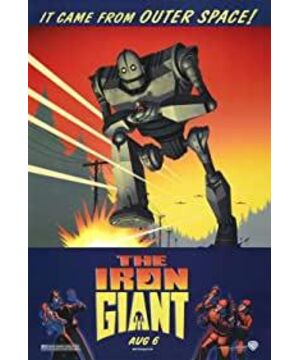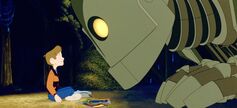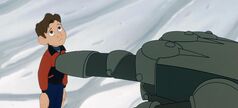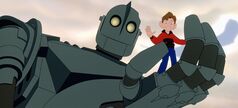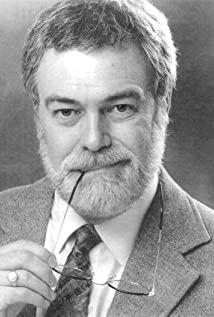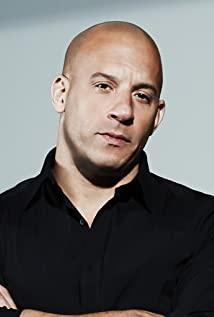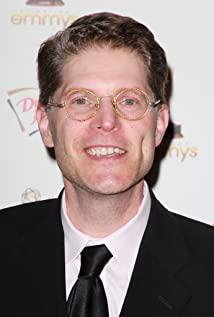In 1999, Brad Bird’s feature-length debut work won 15 Anne Award nominations, and finally blocked 9 awards. That was "Steel Giant", but as an animation that has been so highly praised, the animation is in the country. It can be said to have encountered Waterloo when it came out, with a shooting budget of 48 million US dollars, and a box office of 23 million US dollars in the United States. However, the dismal box office does not explain the quality of this work. On the contrary, "Steel Giant" is instead. A very valuable work. At that time, the major media in the United States praised the film as a rare in recent years, without a Disney label, but an even better animated film. Even now, it is still a film that can bring people to life. A profound animation suitable for all ages with warmth.
Production aspect
1.2D and 3D market demand conflict
The 1990s can be said to be a period of revolution in European and American animation. The birth of new animation technology and the difference in painting concepts made the animation film market splendid. Following the popularity of "Toy Story" in 1995, most European and American animations are transforming to 3D. , And strive to bring people a more refined visual shocking effect. The “Steel Giant” that is undergoing transformation uses a 2D presentation method. In contrast, in the environment at that time, it lacked visual impact, and it was indeed slightly outdated at the time. This may have caused the box office. Part of the reason for not ideal.
But if you put aside the impact of the production impact of other works at the time, from the current point of view, it is not abrupt. In terms of production, it is still quite excellent. It perfectly inherits the paintings of previous works, and its interesting story is enough to fill it. The lack of visual impact is also a work that is not outdated and worth seeing now.
2. Change the previous style of production
Many previous Disney animations have adopted a method that is close to a musical. Music has always been a feature of Disney animation, and the production team’s original idea of the adaptation of "Steel Giant" is also in the way of musicals. In the end, Brad Bird repeatedly asked for a grasp of the story, and the failure of Warner Bros.’s last musical animation "Looking for Camelot" brought pressure on Brad Bird’s production and at the same time. It gave him more creative space, all of which led to the birth of this work that was different from Disney's previous style.
And its difference has contributed to its excellent value. Brad Bird's excellent adaptation really moved us deeply. We should be grateful for the persistence of every director like him.
3. Adaptation of the original work
As we all know, "Iron Giant" is adapted from the fairy tale "Iron Giant" published by British poet and writer Ted Hughes in 1968. We can take a look at the original story:
A steel giant born from nowhere has eaten all the machines of the nearby residents. In order to defend their production tools, people set up a trap in an attempt to destroy the steel giant. Later, a little boy took the steel giant to the place where the old machinery was piled up. Since then, the steel giant has nothing to do with humans. Then another dragon flew over, trying to kill everyone. In order to protect the humans who produce food for themselves, the steel giant stepped forward.
The content of the original work undoubtedly looks rather nonsensical, and even looks like a question mark. It's not that the original work is not interesting, but it stays at the level of fairy tale works for children to read.
It can be said that if Brad Bird copied the original work or just made a small adaptation, then this is definitely a relatively mediocre work, but Brad Bird’s excellent mind is indeed admirable. For the original work, he More only retains the basic settings and the core of the work, but incorporates more elements of the times, such as the identity of the "war machine" of the steel giant, and elements of the Cold War.
Even different from the opposing enemies directly arranged in the original work, there is no absolute enemy in "Iron Giant", and it is not a black and white world, which makes "Iron Giant" more tragic. This setting adds a rich sense of hierarchy to the film, and also arouses deeper thinking for every viewer. It can be said that this is the important reason why this film can be used as an example at any time, and this is also its enduring core.
In contrast, many of the current adaptations are too superficial. Of course, many times it is for the reason of respecting the original or copyright, but we still hope that the film can show something different from the original. How to write your own content on the basis of grasping the core or setting is still a huge problem.
Plot aspect
(Note: The following content contains spoilers, please watch as appropriate)
1. Setting across races
The relationship between humans and other species has always aroused discussion among the audience, which can also reflect the more essential virtues of human beings and help people to recognize themselves more clearly.
With the development of technology and the emergence of robots, the relationship between man and machine has become an interesting topic for discussion. The whole play roughly describes the attitudes of three types of people and steel giants, namely children and steel giants, ordinary people and steel giants, and officials and steel giants.
Children to the Iron Giant: The children represented by Hogarth Hughes show the child’s innocence in the play, the curiosity about the unknown, and the child’s innocence who does not consider the consequences and pressure, make them more innocent. It is easy to understand the steel giant and is more willing to become friends with the steel giant.
Their world is simple. They admire Superman and hate bad guys. The Iron Giants are also like children to a certain extent. They are a blank piece of paper and can be easily guided to build a simple and just world in their hearts. Simple and innocent but incompatible with the Cold War period of mutual suspicion at that time, this simple contrast has left a warm and beautiful.
The general public has no clear boundary between good and evil. Fear is rooted in people’s hearts. The appearance of the steel giant has brought panic to the people, and the destruction of the steel giant and the spread of rumors have also prevented them from being distracted. Believing in the steel giant was a normal response of the public, and later the behavior of saving children by the steel giant made the people believe in the steel giant again. The repetitive nature of the people is precisely the requirement of people’s own interests. Just as the three rules of Asimov’s "Me, Robot", one of the three rules, robots must not harm people, nor should they stand by while seeing people being hurt. When a steel giant can People can only accept it when they don't hurt people and protect people.
Officials and the Iron Giants: A group of people represented by Ken Mansley has always maintained suspicion and hostility towards the Iron Giants. The background of the Cold War amplifies this fear. Such suspicions are common in robot subjects. The content, whether it is for the protection of the public or for their own interests, this suspicion is understandable. In the film, this suspicion is magnified. In addition to expressing the relationship between humans and robots, it also expresses the relationship between humans and robots. The handling of the relationship between people conforms to its strong anti-war color.
In fact, the positioning of the steel giant in the play is more embarrassing than the positioning of other robot subjects, because its original characteristics of a war machine cannot be changed, which casts a layer of absurdity on the whole work, and the same is true. Deepen the connotation of the whole play. Even the war machine can be reconciled and complete the justice belonging to the superman. This shows the director's reflection on war to a considerable extent. Weapons should be used for the right way, even if it is polluted. The soul can also find its own destination, and identity and the past will restrict us from moving forward. Letting go of the embarrassing past and working for the present peace is the way to truly maintain peace.
The "sacrifice" of the steel giant is accidental and inevitable. The play does not give a clear answer to the relationship between man and the steel giant. We can imagine that the identity of the steel giant's war machine will eventually bring grievances to people, and it is far more powerful. Superhuman, a steel giant that humans cannot grasp, the fear of human beings may eventually be difficult to get along with. Therefore, the "sacrifice" of the steel giant has a strong meaning of martyrdom. This extreme contrast seems to be the elimination of the heart. The best complaint of grudges.
2. The core of anti-war ideology
Brad Bird’s adaptation gave the work a strong contemporary color. The frequent appearance of atomic bombs in the play and the false propaganda made the Cold War atmosphere to the extreme.
The arms race of the Cold War was the high-hanging sword of Damocles, which made everyone in the government at risk at that time. Therefore, Ken Mansley's hatred of the steel giant in the play reached a deformed level. In order to find the steel giant he can threaten children, in order to solve the steel giant, he even fabricated lies and detonated a nuclear bomb. Behind this fanaticism is the infinite fear of war. In the end, the atomic bomb created by mankind will destroy mankind itself. This is a kind of irony to war. Human beings will only hurt themselves in the end because of mutual suspicion and competition.
In contrast, the steel giant, which was originally a war machine, has a more human brilliance. This sense of contrast and imbalance further demonstrates the destruction of humanity by the fear of war.
3. Human warmth
The interesting point of the animation is not only the explanation of robots, wars and other issues, but also the warmth of people in the details.
In the beginning of the movie, Dean said to Hogarth Hughes that he believed there was a steel giant. He said this: "Although I don't see anything, if we don't speak for the old madman, who will?" At the time, I watched. I was very touched by this sentence. Perhaps this is also where the director's warmth lay, speaking for the weak and giving them spiritual support. This also confirms to a certain extent that they speak for the steel giant in the back. This point will not be outdated at any moment in history. How to help guide the disadvantaged groups may be wrong, but we should not be excessively criticized and ridiculed, which to a large extent shows gentle humanistic care.
The death of the deer in the middle of the movie was a big touch to the steel giant. Here the concept of equality of life is fully displayed. The discussion of death and the discussion of the soul. The soul is in every beautiful thing, and the steel giant No matter how damaged, it can be reunited, which to a certain extent shows that appearance or physical body should not be a restriction on the beautiful inner soul. Whether it is an animal, a robot or a human being, if you can face each other with a beautiful mind, race will no longer be a restriction, and everything can become a friend.
In the end, although the steel giant sacrificed in a way to save mankind, the film still gave a more profound ending. This ending not only meets the audience’s needs for happy ending, but also gives people more hope. All misunderstandings will eventually break through the mirror. People's hearts broken by the fear of war will also reunite, and the mutual understanding of cross-ethnicity also leaves a gap in imagination for each audience.
View more about The Iron Giant reviews


